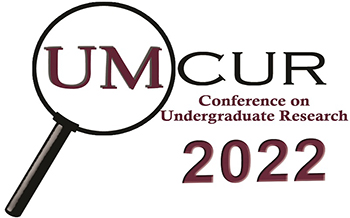Project Type
Poster
Faculty Mentor’s Full Name
Dr. Amy Glaspey
Faculty Mentor’s Department
Communication Science Disorders, Speech Pathology
Abstract / Artist's Statement
Speech sound disorder (SSD) occurs when children have difficulties saying sounds appropriately and need specialized instruction by a speech-language pathologist (SLP) to be understood. The best treatment approach is not always known to SLPs due to the individual needs of a client and the effects of different elements within interventions. By researching teaching strategies and dose in therapy, we can explore procedures that result in better outcomes and speed the learning process (Baker et al., 2018). Thus, the purpose of this research is to describe and quantify the elements that occurred within treatment of SSD to answer: How can we measure (a) dose and (b) modalities of cues in speech therapy? The participants included two boys aged 6;2 and 3;8 with SSD who were observed via video recording during speech sound treatment. A coding scheme was developed to track dosage and the different types of cues used in each therapy session; both were counted in one-minute increments. Quantifying dosage consisted of tallying the prompts given by the clinician, the client's response, and whether the client responded correctly or incorrectly. Documenting modalities of cues consisted of tallying multiple forms of cues given by the clinician: pause, verbal model, pointing, visual cue, prolongation/segmentation, tactile, and instruction. The results for dosage and modalities of cues will be presented across participants and sessions, and the clinical implications will be discussed. This research is clinically significant because increasing our understanding of treatment elements that occur within sessions may inform our understanding of treatment outcomes and help speech-language pathologists design more effective therapies.
Category
Social Sciences
Measuring Dose and Teaching Moment Cues in Speech Sound Disorder
UC South Ballroom
Speech sound disorder (SSD) occurs when children have difficulties saying sounds appropriately and need specialized instruction by a speech-language pathologist (SLP) to be understood. The best treatment approach is not always known to SLPs due to the individual needs of a client and the effects of different elements within interventions. By researching teaching strategies and dose in therapy, we can explore procedures that result in better outcomes and speed the learning process (Baker et al., 2018). Thus, the purpose of this research is to describe and quantify the elements that occurred within treatment of SSD to answer: How can we measure (a) dose and (b) modalities of cues in speech therapy? The participants included two boys aged 6;2 and 3;8 with SSD who were observed via video recording during speech sound treatment. A coding scheme was developed to track dosage and the different types of cues used in each therapy session; both were counted in one-minute increments. Quantifying dosage consisted of tallying the prompts given by the clinician, the client's response, and whether the client responded correctly or incorrectly. Documenting modalities of cues consisted of tallying multiple forms of cues given by the clinician: pause, verbal model, pointing, visual cue, prolongation/segmentation, tactile, and instruction. The results for dosage and modalities of cues will be presented across participants and sessions, and the clinical implications will be discussed. This research is clinically significant because increasing our understanding of treatment elements that occur within sessions may inform our understanding of treatment outcomes and help speech-language pathologists design more effective therapies.
